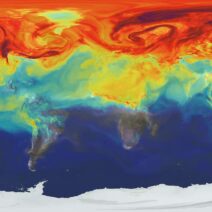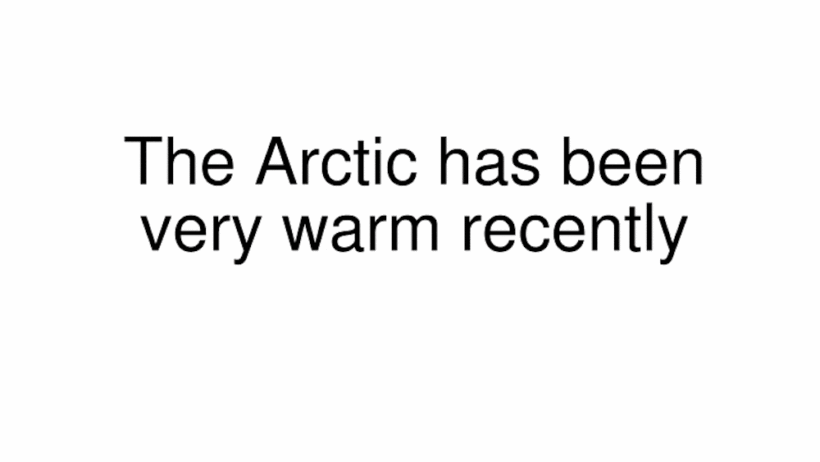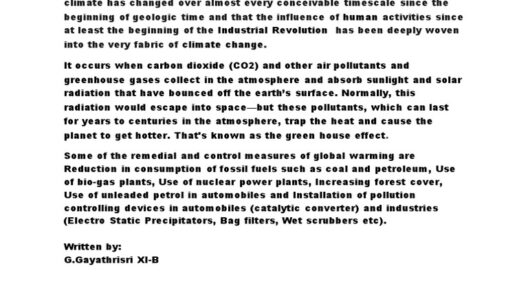Global warming, a term often synonymous with the slow and methodical rise in average temperatures, paradoxically evokes speculation about the nature of winter in the Arctic regions. The relationship between climate change and the intensification of winter weather phenomena is a complex interplay, akin to fitting together pieces of a jigsaw puzzle that continuously evolves. As temperatures spiral in unwelcome directions, one may wonder: could the very thing that warms our planet also give rise to a colder, more ferocious Arctic winter? The answer lies in understanding the dynamics of our atmosphere, the oceanic currents, and the delicate balance of Earth’s climatic systems.
At the heart of global warming is the emissions of greenhouse gases, which create a thicker blanket around the Earth, regulating temperature and altering weather patterns. These alterations manifest in various forms, from prolonged droughts in some regions to increasingly violent storms in others. Intriguingly, while the northern hemisphere experiences overall warming trends, it simultaneously witnesses unpredictable winter fluctuations. This beguiling dance between warmth and cold offers a fascinating lens through which to examine the Arctic’s winter climate.
Imagine the Arctic as a teetering balance, where the surrounding warm air competes ferociously with the chill of the polar vortex, a mass of frigid air that tends to circle the polar regions. When this polar vortex remains stable, it encapsulates the cold air, keeping it confined within the Arctic. However, a warming climate shakes this equilibrium, lacerating the polar vortex and allowing waves of arctic air to spill southward. This phenomenon is reminiscent of a roller coaster plummeting down steep drops, each twist and turn leading to unforeseen outcomes. Consequently, rather than a singular, mild winter, one can see the emergence of cold outbreaks that are not only harsh but peculiar in their intensity and unpredictability.
The Arctic, often described as the planet’s refrigerator, plays a pivotal role in regulating global temperatures. This icy expanse helps to reflect sunlight back into space, creating a cooling effect. As it diminishes due to rising temperatures—some estimates suggest the Arctic could be ice-free in summer by the late 21st century—it compromises its ability to perform this function. The reflective ice is retreating, replaced by darker oceanic waters that absorb heat instead of reflecting it. This process is akin to covering a thermostat with a cozy blanket; the subtle shifts of nature culminate in profoundly disruptive outcomes.
Moreover, as we delve into the oceanic currents, we unearth another obscured layer of complexity. Ocean currents, such as the Gulf Stream, transport warm water from tropical regions to higher latitudes. This transfer of heat has traditionally helped maintain a temperate climate in certain parts of Europe and North America. However, global warming poses the grave risk of altering these currents, possibly slowing them down or even leading to more abrupt changes. Hypothetically, if the Gulf Stream weakens considerably, it may plunge Europe into a prolonged and frigid winter, starkly contrasting with the warming trends perceived in the Arctic.
The notion of “feedback loops” further complicates this phenomenon. These loops are processes that amplify the effects of global warming. For instance, as Arctic ice diminishes, the ensuing darker surfaces absorb more sunlight, exacerbating warming. This leads to more ice melt, creating a cascade effect. Thought-provokingly, while one could argue that the overall climate is warming, unprecedented winter conditions could materialize as a direct result of these loops. It is a vicious cycle, with ominous implications for ecosystems and weather patterns, both locally and globally.
Humans, arguably the most impactful species on the planet, wield a significant hand in this climate conundrum. As industrialization burgeoned, so too did the emissions of carbon dioxide and other greenhouse gases, invoking changes that outmatch natural variations. The atmosphere is becoming a chaotic tapestry, interwoven with unpredictable threads that can unravel the fabric of climatic stability. Anthropogenic influences are voiding historical weather patterns, making the once-predictable presence of winter seem capricious and unwieldy.
The consequences of such drastic fluctuations extend beyond mere atmospheric curiosities. They pose tangible threats to biodiversity in the Arctic as vulnerable species such as polar bears and seals find their habitats eroding. This scenario unfolds like the pages of a cautionary tale, warning of dire ramifications if critical thresholds are breached. Furthermore, unpredictable winters jeopardize human communities, particularly indigenous peoples who rely on stable climatic patterns for their lifestyle and sustenance.
Addressing the question of whether global warming could indeed cause an Arctic winter calls for a balance of hope and caution. While the warming atmosphere introduces a potential for intense winter weather, the overarching challenge lies in curbing greenhouse gas emissions and fostering sustainable practices. Mitigating climate change is akin to stitching together rifts in the planetary fabric, reinforcing structures where frays have begun. Collective action, informed by science and propelled by urgency, is imperative to ensure that the Arctic’s winter remains a season of cold beauty rather than harbinger of chaos.
In conclusion, the intricate web connecting global warming to unusual Arctic winters reveals profound truths about our environmental stewardship. Winter, at its core, is a transformative season, embodying both beauty and harshness. As humanity stands on the precipice of climatic upheaval, it is our responsibility to navigate this complex interplay with wisdom and foresight. Only by recognizing our role within this systemic framework can we hope to preserve the delicate cold, ensuring that the Arctic maintains its essential balance amidst a rapidly warming world.








